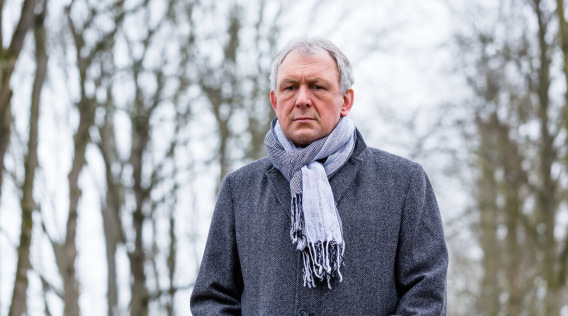Mesothelioma and Managing SAD During the Winter Season
Health & WellnessWritten by Dana Nolan, MS, LMHC | Edited By Amy Edel

Many people experience Winter Blues or Seasonal Affective Disorder. Research has established that people diagnosed with mesothelioma and their caregivers have a higher than average incidence of depression, putting them at higher risk for seasonal depression as well.
During late fall and winter’s shorter days and colder weather, we spend less time outside in the sunlight. This decrease in exposure to sunlight affects our serotonin, melatonin and vitamin D levels. Decreased exposure to sunlight during the winter months can put us at risk of developing symptoms of depression including sadness, fatigue, social isolation, feelings of hopelessness and loss of interest in activities we typically find fun.
People who already struggle with depression year-round are at increased risk of worsening symptoms during the dark winter months. Typically, depressive symptoms can be difficult to notice in ourselves. Awareness of depression symptoms and SAD risk factors can help us address symptoms faster.
Many of the same treatments for depression are also helpful in mitigating the symptoms of SAD.
Light Therapy
Light therapy is also called “phototherapy.” It’s quite common in parts of the world that have little or no sunlight during the winter months.
Sitting close to a light box for about 30 minutes in the morning has been shown to positively affect the brain chemicals that lift our mood. Light boxes mimic sunlight (without dangerous UV rays) and are safe for most people.
It is important to check with your physician first before utilizing light therapy. People with certain eye conditions or who have bipolar disorder should use light boxes with caution.
Cognitive Behavioral Therapy
Cognitive behavioral therapy can help people experiencing depression recognize their negative thinking patterns and unhelpful behavioral habits. CBT provides suggestions for more helpful ways of thinking and behaving.
When you have the winter blues, it’s easy to talk yourself into thinking that it’s not worth the effort to reach out to friends or go do something fun like see a movie. CBT provides psychoeducation about how depression can keep you feeling sad, hopeless and stuck inside the house away from others.
Licensed mental health professionals provide CBT services. Health insurance typically covers this treatment.
Vitamin D
Emerging research shows that people with SAD symptoms have lower levels of vitamin D. Exposure to sunlight and vitamin D supplements have shown mild improvement in some symptoms of the winter blues.
Speak with your physician before taking any supplements and discuss potential interactions with other medications you’re taking. They may want to check your vitamin D levels with lab work prior to starting vitamin D supplements.
Antidepressants
There are a wide range of antidepressants that effectively treat depression. It can take several weeks for antidepressants to work, so it is beneficial to talk to your physician as soon as you start feeling sad, fatigued and withdrawn.
Many medical oncologists are already screening for depressive symptoms in their patients and are quite comfortable treating depression in their patients. Primary care physicians are also a good choice to discuss the appropriateness of an antidepressant if you’re experiencing SAD symptoms.
A major challenge in diagnosing and treating SAD (and depression in general) is a common belief that nothing will help or that it will take too much work to feel better. But seasonal depression is quite treatable and it’s possible to use one or more of the above treatment modalities to help you feel better.






